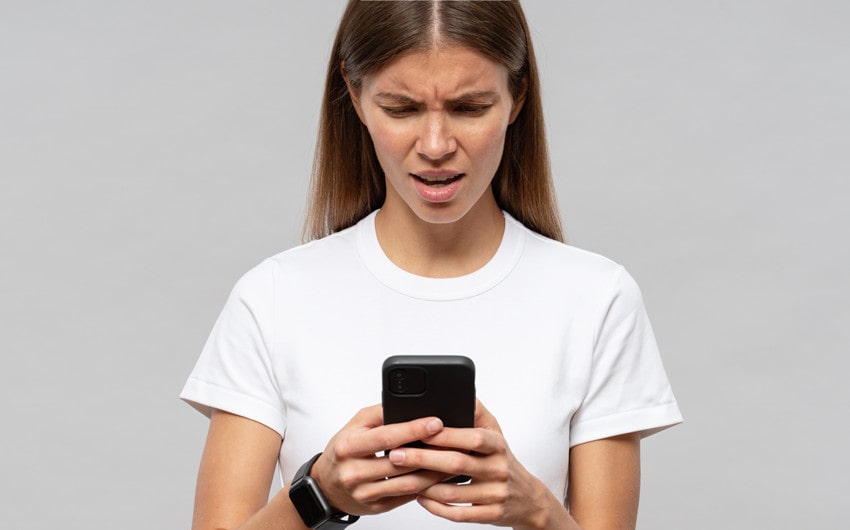Cringe Meaning in Text: A Guide to Awkward Conversations
Ever felt secondhand embarrassment when someone shares an awkward joke or overshares online? That’s the feeling behind the cringe meaning in text. When we call something “cringe,” we’re talking about moments that make us feel uncomfortable or embarrassed—whether it’s our own message or someone else’s.
From silly oversharing to a joke that falls flat, “cringe” captures those social slip-ups in digital chats. It’s a word that’s taken over our online conversations, adding humor and sometimes a hint of sympathy to those little mishaps we all encounter.
Defining “Cringe” in Texting and Online Slang
In texting and online conversations, “cringe” describes moments that are awkward, embarrassing, or uncomfortable. The term comes from the physical reaction of cringing, such as when we grimace or look away in response to something socially uncomfortable. In digital spaces, calling something “cringe” captures that same reaction in response to awkward interactions.
People often label messages or posts as “cringe” when they feel forced, out of touch, or overly self-conscious. This might include an outdated joke, a message that overshares, or slang that doesn’t land. These moments stand out as uncomfortable, especially in social media, where people freely express opinions and reactions in real time.
Ultimately, “cringe” has become a way for people to connect over shared discomfort and laugh off awkwardness together. As a form of online slang, it’s a useful shorthand that lets us easily label and navigate digital mishaps in a humorous way.
How to Use “Cringe” in Text Conversations

The term “cringe” has become popular in digital conversations, but knowing how to use it effectively can help avoid coming across as overly critical or insensitive. Here are some tips for using “cringe” appropriately in text, along with examples to illustrate each suggestion.
1. Use “Cringe” to Relate, Not to Judge
“Cringe” can be a great way to connect with others over shared awkward experiences, creating a bond through relatable moments. Instead of using it to criticize, try to show empathy or laugh about the situation together. This approach keeps the conversation lighthearted and prevents anyone from feeling singled out or judged.
Example: Friend shares an awkward story: “Wow, that’s cringe! I’d probably react the same way, though.”
2. Use It Sparingly to Avoid Sounding Insensitive
Because “cringe” has a strong connotation, overusing it can make you seem overly negative or dismissive. Reserving “cringe” for specific moments that truly feel awkward or uncomfortable keeps it meaningful and helps avoid hurt feelings. Using it sparingly also makes it more impactful, ensuring it doesn’t overshadow the positive aspects of the conversation.
Example: Someone shares a cringey trend video: “Oof, that video is a bit cringe, but I get why people are into it!”
3. Acknowledge Your Own Cringe Moments
Using “cringe” to describe your own embarrassing moments shows self-awareness and humility, inviting others to laugh with you rather than at you. This approach makes “cringe” feel less judgmental and more like a shared joke, helping to create a friendly and relatable vibe in your texts.
Example: You share an embarrassing text you sent: “I accidentally sent this to the wrong person… cringe, right?”
4. Pair It with Humor or Self-Deprecation
Adding humor or a bit of self-deprecation can help soften the critical edge of “cringe” and make it more playful. This approach lets the conversation stay light, giving the other person a chance to laugh and feel at ease. By making fun of yourself a little, you create a comfortable environment where others feel free to share their own cringe-worthy moments without fear of judgment.
Example: Reacting to your own awkward message: “Just realized I used way too many emojis in that text… major cringe. 😂”
5. Avoid Using “Cringe” to Put Someone Down
It’s best to avoid using “cringe” directly on someone else’s behavior, choices, or style, as it can come across as overly critical or judgmental. If a friend feels embarrassed, acknowledging it in a supportive way can make a positive difference, showing that you’re not judging them harshly. This lets “cringe” serve as a term of shared humor and empathy rather than something critical or hurtful.
Example: Friend feels embarrassed about something they said: “It happens! We all have cringe moments, no big deal!”
How “Cringe” Is Used in Different Contexts
“Cringe” has found its place in various online and texting contexts, where it captures different shades of awkwardness or discomfort. From personal conversations to public social media posts, this term has become a versatile way to describe the uneasy or embarrassing moments we all occasionally experience. Here are a few common contexts where “cringe” is widely used and understood:
1. Personal Embarrassment
In texting, people often use “cringe” to describe their own awkward moments or mistakes. This could be anything from sending an unintended message to accidentally using the wrong slang in an attempt to sound “cool.”
When someone says, “I cringed at myself,” it usually reflects an uncomfortable self-awareness, where they feel embarrassed by their own actions or words. Sharing these moments can be both a way to laugh at oneself and to make others relate through shared experiences of personal embarrassment.
2. Secondhand Embarrassment
Another popular use of “cringe” comes from observing someone else’s uncomfortable or socially awkward behavior. This is known as secondhand embarrassment, where one feels embarrassed on behalf of another person.
For example, seeing someone make an over-the-top public confession online or witnessing a friend try too hard in a social setting might elicit a “cringe” reaction. In this sense, “cringe” serves as a term of empathy mixed with humor, as we recognize the awkwardness without directly judging the person involved.
3. Social Media Trends
Social media has amplified “cringe” culture, with many users sharing and labeling content specifically because it’s awkward or uncomfortable to watch. Platforms like TikTok and Instagram are known for “cringe compilations” or “cringe-worthy moments” that highlight behaviors or trends seen as embarrassing or out of touch.
These posts often go viral as people find humor in the shared experience of watching someone’s awkward moment. Sometimes, the content itself is intentionally awkward, tapping into the “so-bad-it’s-good” appeal of cringeworthy media, where the humor comes from laughing at, and sometimes with, the creator.







